Samuel Adisa
Student @ Akungba
Choking on Progress: The 1966 New York City Smog Crisis That Changed America"
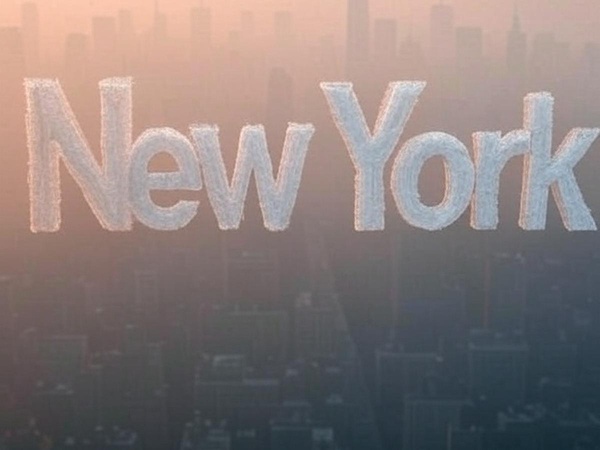
<p>The 1966 New York City smog, spanning November 23–27, 1966, stands as one of the most significant environmental disasters in American urban history. This event, coinciding with the Thanksgiving holiday weekend, enveloped New York City and its surrounding metropolitan areas in a toxic haze, exposing the severe consequences of unchecked air pollution. It was the third major smog event in the city’s history, following similar episodes in 1953 and 1963, but its impact was profound, catalyzing national awareness and legislative action on air quality. This extensive exploration covers the causes, conditions, health impacts, societal responses, and long-term consequences of the 1966 smog, drawing on historical accounts and contemporary reflections to provide a comprehensive understanding.
</p><p>Background and Causes
</p><p>In the mid-20th century, New York City was a hub of industrial activity, dense population, and heavy vehicular traffic, all of which contributed to its status as having the most polluted air among major U.S. cities. The smog of 1966 was not an isolated incident but part of a recurring pattern of air quality crises driven by industrialization and lax environmental regulations. The primary sources of pollution included:
</p><p>Industrial Emissions: Factories across the city and its neighboring regions, particularly in New Jersey, released vast amounts of particulates and chemicals into the atmosphere. Coal-fired power plants and industrial facilities were significant contributors.
</p><p>Residential and Municipal Incinerators: At the time, many apartment buildings and municipal facilities burned refuse in incinerators, releasing smoke and toxic compounds like sulfur dioxide and carbon monoxide.
</p><p>Vehicular Exhaust: The proliferation of automobiles and diesel-powered vehicles added substantial amounts of carbon monoxide, nitrogen oxides, and particulate matter to the air.
</p><p>Maritime and Commercial Activity: Ports and commercial operations, including maritime traffic and commercial cooking, further exacerbated pollution levels.
</p><p>
The meteorological conditions during November 23–26, 1966, were critical in transforming these emissions into a deadly smog. A large mass of stagnant air, caused by a high-pressure system over the East Coast, created a temperature inversion. This phenomenon occurs when a layer of warm air traps cooler air near the ground, preventing the natural dispersion of pollutants. The inversion trapped a noxious mix of carbon monoxide, sulfur dioxide, smoke, and particulate matter, creating a dense, greasy haze that blanketed New York City, parts of New Jersey, and Connecticut. Visibility was severely reduced, with smoke shade—a measure of atmospheric visibility interference—reaching two to three times its normal levels. A pilot’s account from the time vividly described flying at 2,000 feet through a “greasy-looking and pervasive haze,” where the ground was barely visible, and climbing higher revealed a thick, opaque layer of polluted air obscuring the city below.
</p><p>The Smog Event: Timeline and Conditions
</p><p>The smog began on Wednesday, November 23, 1966, as the stagnant air mass settled over the region, coinciding with the start of the Thanksgiving holiday weekend. For three days, the city was engulfed in a toxic cloud, with air quality deteriorating rapidly. Key developments during the event include:
</p><p>November 23–24: The smog intensified as pollutants accumulated under the inversion. Residents reported stinging eyes, coughing, and difficulty breathing. The haze was so thick that landmarks like the Empire State Building and Chrysler Building were obscured, as captured in iconic photographs from the time. The city’s air pollution control commissioner, Austin N. Heller, noted that pollution levels were possibly the highest in New York’s history.
</p><p>
November 25: By this point, the situation had escalated to a crisis, prompting regional leaders to issue a “first-stage alert.” This alert called for voluntary measures to reduce emissions, such as limiting vehicle use, shutting down incinerators, and reducing space heating. The city itself halted municipal incinerator operations, and utility companies switched from burning coal and oil to less polluting natural gas. However, these measures were largely reactive and insufficient to address the scale of the crisis. Hospitals reported a surge in patients with respiratory and cardiovascular complaints, particularly among vulnerable populations.
</p><p>
November 26: A cold front finally swept through the region, dispersing the smog and ending the alert. The city began to recover, but the aftermath revealed the extent of the damage.
</p><p>
The holiday timing likely mitigated some impacts, as reduced industrial and commercial activity during Thanksgiving lessened overall emissions. However, the unseasonably warm temperatures in the lower sixties made the smog’s effects more bearable indoors, as residents could forgo heavy heating.
</p><p>
Health Impacts
</p><p>Initially, city officials, including the Hospital Commissioner, downplayed the smog’s health effects, claiming there were no significant impacts or deaths directly attributable to the event. However, subsequent studies revealed a far graver reality. A December 1966 report estimated that approximately 10% of New York City’s population—roughly 800,000 people—suffered adverse health effects, including stinging eyes, throat irritation, coughing, wheezing, and respiratory distress.
</p><p>
A statistical analysis published in October 1967 was even more damning, estimating that the smog likely caused 168 deaths, with some sources citing figures as high as 200–400 deaths over the period. These deaths were primarily linked to respiratory and cardiovascular conditions exacerbated by the toxic air, particularly among the elderly and those with pre-existing health issues. The U.S. Department of Health later confirmed an increase of approximately 24 deaths per day during the smog period (November 24–30). The pollutants involved—sulfur dioxide, carbon monoxide, and particulate matter—were known to aggravate conditions like pulmonary emphysema and chronic bronchitis, which were already on the rise in the 1960s due to both air pollution and widespread smoking.
</p><p>Societal and Political Response
</p><p>The 1966 smog was a wake-up call for New York City and the nation, exposing the dire need for air pollution control. The public outcry and media coverage amplified the issue, with The New York Times publishing before-and-after photos of the smog-filled cityscape, initially claiming no illnesses were directly linked but later acknowledging the health toll. The event was later dramatized in popular culture, notably in a 2012 episode of Mad Men, which depicted the smog’s impact and was based on the real-life air quality emergency.
</p><p>
Locally, the smog prompted immediate action. New York City had already passed Local Law No. 14 in May 1966, a stringent anti-pollution measure aimed at controlling emissions from refuse and fuel burning (excluding vehicles). The smog tested this law’s effectiveness, revealing gaps in enforcement and infrastructure, such as inadequate garbage storage capacity when incinerators were shut down. In response, the city strengthened its Air Pollution Control Codes, targeting sources like municipal incinerators, which were eventually phased out (the last municipal incinerator closed in 1999).
</p><p>Long-Term Consequences and Legacy
</p><p>The 1966 smog left an indelible mark on environmental policy and public consciousness. It underscored the lethal potential of air pollution, challenging the pre-EPA era’s complacency toward environmental degradation. The event’s legacy can be seen in several key areas:
</p><p>Legislative Milestones: The 1967 Air Quality Act and 1970 Clean Air Act were direct outcomes of the growing awareness sparked by events like the 1966 smog. These laws reduced emissions from factories, vehicles, and other sources, significantly improving air quality over subsequent decades. For example, acid rain and widespread sewage dumping in New York’s waterways were largely mitigated by federal and local regulations.
</p><p>
EPA Creation: The establishment of the EPA in 1970 was a pivotal moment, driven by the recognition that air and water pollution required national coordination. The agency’s formation was a direct response to crises like the 1966 smog, which highlighted the limitations of local efforts.
</p><p>
Public Awareness: The smog shifted public perception, making air pollution a visible and urgent issue. Media coverage, including iconic images of a shrouded Manhattan, brought the crisis into homes nationwide, fostering environmental consciousness that fueled the broader environmental movement of the 1960s and 1970s.
</p><p>Modern Reflections: The 1966 smog has been invoked in contemporary discussions, particularly during debates over environmental deregulation. Following the 2016 election of Donald Trump, whose administration proposed significant EPA budget cuts, media outlets like The New York Times, Vice Media, and the Natural Resources Defense Council cited the 1966 smog as a cautionary tale of a pre-EPA era. These reflections underscored the risks of rolling back environmental protections, with David Hawkins noting that heavy pollution was once an “everyday fact of life.”
</p><p>Conclusion
</p><p>The 1966 New York City smog was a harrowing episode that exposed the deadly consequences of air pollution in one of the world’s largest cities. From November 23–27, 1966, a toxic mix of pollutants, trapped by a temperature inversion, choked the city, sickened hundreds of thousands, and likely killed 168–400 people. The crisis spurred immediate local action, including stronger air pollution controls, and catalyzed federal legislation like the 1967 Air Quality Act and 1970 Clean Air Act, which reshaped environmental policy in the United States.
</p><p>
</p><p>
</p><p>
</p><p>
</p><p>
</p><p>
</p><p>
</p><p>
</p><p>
</p>
Other insights from Samuel Adisa
Referral Earning
Points-to-Coupons
Insights for you.






 85
85






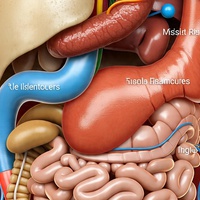




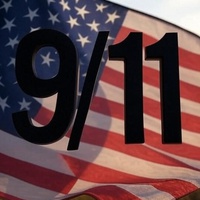

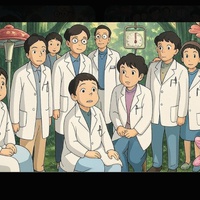
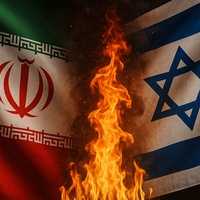
















































Comments